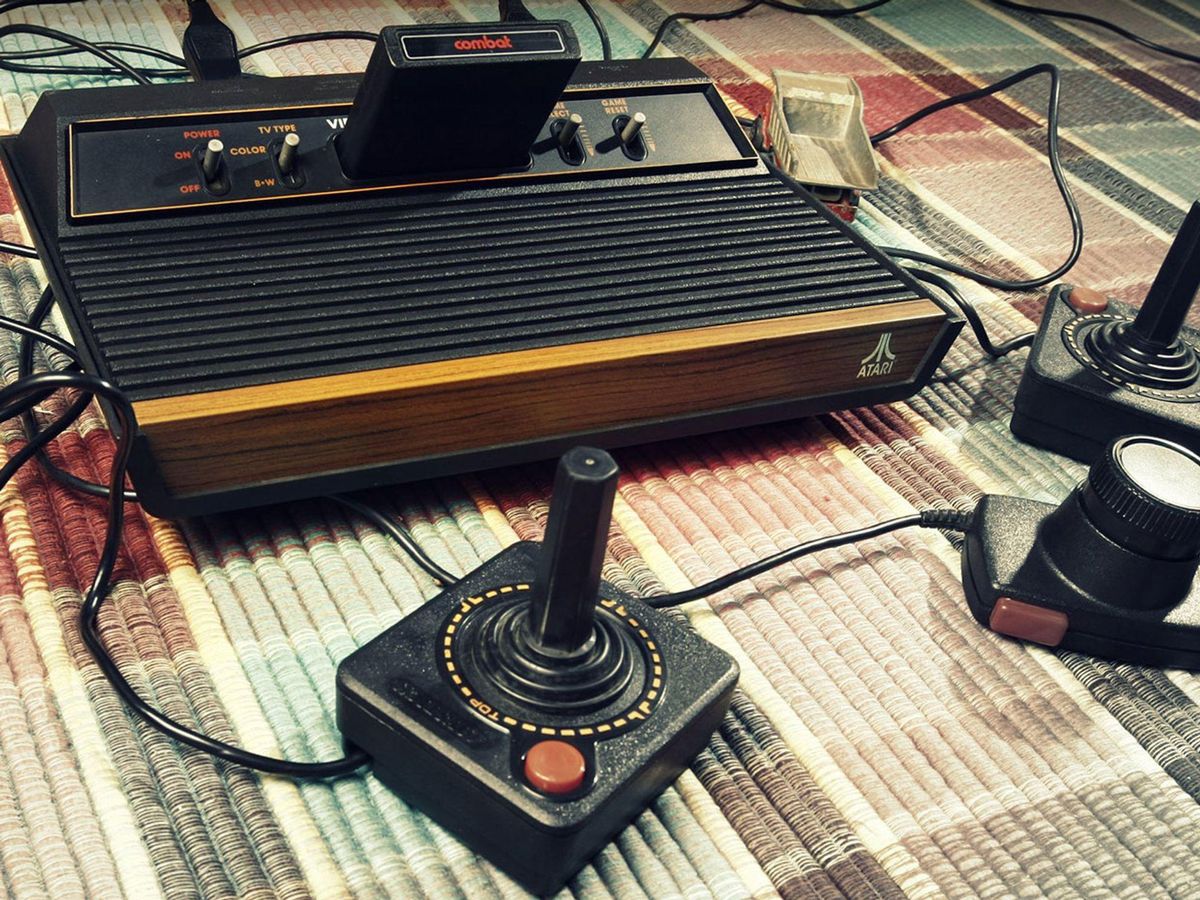The Consumer Electronics Hall of Fame: Atari 2600
This was the machine that finally let us play Space Invaders at home

The impact of the Atari 2600 game console is hard to quantify, though US $116 billion might be a good number to start with. That’s a 2018 estimate from Reuters of how much revenue the video-gaming industry had in 2017. It’s enough to put video gaming ahead of the television industry, which brought in $105 billion. And TV is shrinking, while games are growing.
Atari, founded in 1972, was among the first video-game companies and had one of the best pedigrees in the industry. Cofounders Nolan Bushnell and Ted Dabney, along with their engineering colleague Al Alcorn, had invented Pong, the first successful arcade game. After just a few years in business, they understood as well as anyone and better than most the critical limitation of the business: The electronics for each game were designed and built for that game alone. Had Atari continued on that path, hardware development would have become ruinously expensive. Further, the approach was completely impractical for the home market—Atari’s next target.
What was needed was general-purpose hardware. Meanwhile, over in the semiconductor industry, they had recently begun making the microprocessor, a sort of general-purpose calculating device that would fit the bill. But microprocessor units (MPUs) were still pretty expensive.
It just so happened MPU prices began plummeting in 1975. MOS Technology had just introduced an 8-bit MPU, the 6502, that was far cheaper than competing devices from more established vendors. Zilog would introduce a similarly inexpensive Z80 the following year. Atari contacted MOS Technology and asked for a smaller version of the MOS Technology chip, and MOS obliged with the 6507, which was in essence a 6502 in a smaller package (28 pins versus 40 for the 6502). The restricted I/O led to some minor performance limitations, but they were immaterial for what Atari wanted to do with the chip in the short run.
Output would also have to be standardized. Where arcade games had built-in displays, a home console would take advantage of the display that was already in nearly every household—a television screen. Atari designed circuitry to output video and sound to television sets, resulting in a custom integrated circuit (IC) that Atari called the Television Interface Adaptor.
The other major system components were the memory cartridge and the game controller. The memory cartridges were ROM (read-only memory) modules, which stored game instructions to be executed by the microprocessor and associated circuitry. The modules could be easily swapped in and out: different module, different game. It wasn’t the first game console with plug-in software modules, but it was the first one that sold well.

It is worth noting that the success of the module approach inspired the creation of a new industry. Several former Atari engineers left to form Activision, widely regarded as the first third-party game developer. Atari perceived third-party development as a threat, by the way, but eventually acceded to an arrangement in which it would collect royalties from other game developers.
The first game controllers, meanwhile, were joysticks and dial controllers. Other input devices followed, including trackballs, paddles, and a keypad.
After its introduction in 1977, the Atari 2600 sold well enough for the first couple of years. But sales really soared in 1980, when the company began marketing a licensed version of the game Space Invaders. Atari built on that success with the release the following year of two of its own titles, Asteroids and Missile Command.
The company undermined itself with poor-quality games, however, including a title associated with the film E.T. that was rushed to market. Atari was already reeling when the U.S. video-game market crashed in 1983. The collapse had a combination of causes, including market saturation and competition from personal computers, which were an even more general-purpose form of hardware. Along the way, Atari was sold, and sold again. Still, the 2600 line survived. The last 2600 was released in 1992.
What was innovative in the 2600 may now seem pedestrian, but that merely underlines how innovative the 2600 was. The principles on which it was built and that it helped to popularize—general-purpose hardware and separate software—have endured for over 40 years.


